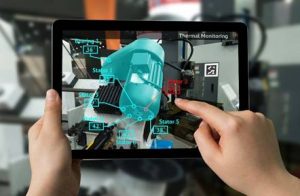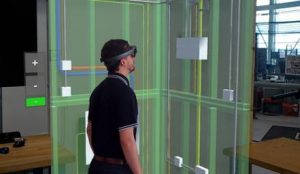
Using technology to transform your company
By Scott Hale, vice president consulting services, IMAGINiT Technologies
Automation / Robotics Electronics Production / Materials Regulations & Standards Engineering Supply Chain 3D printing AR AR augmented reality CAD design Industry 4.0 Risk Mitigation system Virtual reality VR VRNew technology is transforming the way that companies in every sector operate
We’re living and working in an age of unprecedented disruption. New technology is transforming the way that companies in every sector operate. The most successful companies are redefining how they leverage technology to have the biggest impact on their market. They are not just looking to shave a few minutes from their assembly or quality processes. They are instead taking a step back, and looking at their process in its entirety, then re-inventing those stages that are costing them business. 
When you look at industries like the taxi and hotel industries for instance, you see that the biggest players now don’t own any taxis (Uber) or own any hotels (Airbnb). These are just a few examples of disrupting the existing market with a completely new way of attacking a business problem. To go one step farther, extreme customer responsiveness has become the norm. With video streaming services like Netflix, it’s possible to watch countless movies, whenever and wherever you want.
Buyer expectations for business-to-business customers have evolved as well. It’s more important than ever to stay ahead of digital disruption. Leveraging technology in innovative ways is the key to building a competitive advantage in your market and growing your business. ‘Industry 4.0’ is a broad term that you hear about a lot today, and it means different things to different people. I believe it is about leveraging today’s technology to create value. This can manifest itself in a number of ways, from Top Line Growth, to Bottom-line Cost Savings, to Risk Mitigation. Here are a few examples to consider:
Driving top-line growth through customer insight driven marketing and design
Savvy companies are deploying technology to respond rapidly to customer needs. As an example, IMAGINiT has worked with a playground equipment manufacturer to create online product configuration tools that enable sales teams to dynamically respond to buyers’ needs on the fly. As part of the sales process, this company needed to be able to show playground installation visuals to city parks departments or regional school districts. In the past, it took weeks to create these eye-catching images. Now, the playground can be created virtually in minutes, right in front of the customer and modified instantly, based on live feedback, to things such as color, placement, and structure features. The result is a project won much faster.
Transforming business with bottom-line cost savings
In manufacturing, 3D printing is becoming more of a standard than an exception. It has the potential to reduce operational costs and enhance efficiency. It is not being used just for “rapid prototyping” anymore. In some cases, industrial equipment replacement parts can be made to order onsite with a 3D printer in a matter of hours, or even minutes. With the wide array of printer types and materials available to print with today, this option can result in thousands of dollars in savings of time and outsource part replacement costs. 
Another significant area of expense for many manufacturers lies in the process of sharing data between business systems. Entering information into a CAD design system, then transferring that same BOM information to your PLM or CRM systems is an issue for many. Significant time is lost, and the opportunity for error is introduced every time data is re-entered. We have worked with many companies that are looking to eliminate this bottom-line expense and automate the process of sharing data throughout the entire manufacturing organization. In one case, a medical products company was challenged with making sure that their vaulted engineering data was integrated with their company PLM system. This manual re-entry process has now been completely automated.
Improving your process through risk mitigation
Augmented Reality (AR) is a term that is rapidly becoming a buzzword. While virtual reality (VR) can provide you with a digital view of how the completed model or project will look. AR goes one step further and combines your virtual model data with data captured from the existing real world. With augmented reality, information about an existing environment is captured through photogrammetry or 3D scanning techniques. The augmented view is then created digitally from that information, combined with the new virtual model design and digitally annotated to provide additional insight about how the new design may work in the existing available space. Many building renovation projects begin with this approach, as it provides a cost-effective way to mitigate risk and become aware of construction issues earlier in the process.
One more way to mitigate risk is leveraging predictive maintenance information. If you can plan for equipment maintenance or learn from past maintenance issues, you can avoid future failures and downtime. In this Industry 4.0 era, there is a myriad of sensors available to help monitor and provide data for your machinery. At one point, we worked with a large paper products company that installed machine sensors to monitor maintenance status and helped them to configure a link back to their engineering system that relayed data regarding the exact position and orientation of the machine when the issue occurred. This sped up the process of trouble shooting and future design planning.
Conclusion
In this ever-changing world of disruption, every business needs to allocate time regularly to review their entire process and the issues that are keeping them from reaching their goals. Only then will management teams be in a position to consider where technology can be applied in new ways. The examples discussed here are just the tip of the iceberg. Digital disruption is a powerful way to grow your revenues, reduce your costs, and boost your competitive advantage.
